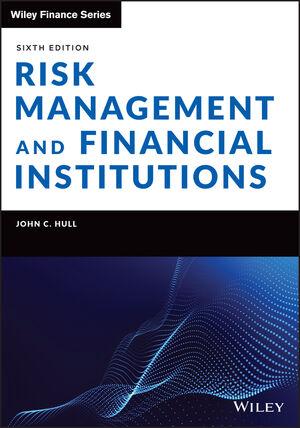
 II Provided an Example of how the answer should look
II Provided an Example of how the answer should look
The following information is available concerning the historical risk and return relationships in the U.S. capital markets: U.S. CAPITAL MARKETS TOTAL ANNUAL RETURNS, 1990-2015 Arithmetic Geometric Standard Deviation Investment Category Mean Mean of Returna Common stocks 10.16% 8.72% 17.5% Treasury bills 4.24 4.17 3.6 Long-term government bonds 3.88 Long-term corporate bonds 5.89 Real estate 9.48 Based on arithmetic mean. 10.2 4.0 a. Explain why the geometric and arithmetic mean returns are not equal and whether one or the other may be more useful for investment decision making. The arithmetic average assumes -Select- V, while the geometric average assumes -Select- b. For the time period indicated, rank these investments on a relative basis using the coefficient of variation from most to least desirable. Do not round intermediate calculations. Round your answers to two decimal places. Rank Investment Category Coefficient of variation, % Real estate Treasury bills NMT in Long-term government bonds Long-term corporate bonds Common Stocks C. Assume the arithmetic mean returns in these series are normally distributed. Calculate the range of returns that an investor would have expected to achieve 95 percent of the time from holding long-term corporate bonds. Do not round intermediate calculations. Round your answers to two decimal places. Use a minus sign to enter negative values, if any. Arithmetic: from % to a. The arithmetic average assumes the presence of simple interest, while the geometric average assumes compounding or interest-on-interest. The geometric mean internal rate of return is a critical concept in security and portfolio selection as well as performance measurement in a multi-period framework. b. Ranking is best accomplished by using the coefficient of variation (standard deviation / arithmetic mean, multiplied by 100): 1 - Real estate 41.93 2 - Treasury bills 71.05 3 - Long-term government bonds 105.17 4 - Long-term corporate bonds 169.23 5 - Common stocks 171.70 c. Expected mean plus or minus two standard deviations: Arithmetic: 5.85% +/-9.9%(1.96) = -13.55% to +25.25% Solution Correct Response eBook Problem 2-08 The following information is available concerning the historical risk and return relationships in the U.S. capital markets: U.S. CAPITAL MARKETS TOTAL ANNUAL RETURNS, 1990-2015 Arithmetic Geometric Standard Deviation Investment Category Mean Mean of Returna Common stocks 10.60% 8.94% 18.2% Treasury bills 3.80 3.74 2.7 Long-term government bonds 5.58 Long-term corporate bonds 5.85 Real estate 9.54 9.50 Based on arithmetic mean. 5.80 5.49 io o The following information is available concerning the historical risk and return relationships in the U.S. capital markets: U.S. CAPITAL MARKETS TOTAL ANNUAL RETURNS, 1990-2015 Arithmetic Geometric Standard Deviation Investment Category Mean Mean of Returna Common stocks 10.16% 8.72% 17.5% Treasury bills 4.24 4.17 3.6 Long-term government bonds 3.88 Long-term corporate bonds 5.89 Real estate 9.48 Based on arithmetic mean. 10.2 4.0 a. Explain why the geometric and arithmetic mean returns are not equal and whether one or the other may be more useful for investment decision making. The arithmetic average assumes -Select- V, while the geometric average assumes -Select- b. For the time period indicated, rank these investments on a relative basis using the coefficient of variation from most to least desirable. Do not round intermediate calculations. Round your answers to two decimal places. Rank Investment Category Coefficient of variation, % Real estate Treasury bills NMT in Long-term government bonds Long-term corporate bonds Common Stocks C. Assume the arithmetic mean returns in these series are normally distributed. Calculate the range of returns that an investor would have expected to achieve 95 percent of the time from holding long-term corporate bonds. Do not round intermediate calculations. Round your answers to two decimal places. Use a minus sign to enter negative values, if any. Arithmetic: from % to a. The arithmetic average assumes the presence of simple interest, while the geometric average assumes compounding or interest-on-interest. The geometric mean internal rate of return is a critical concept in security and portfolio selection as well as performance measurement in a multi-period framework. b. Ranking is best accomplished by using the coefficient of variation (standard deviation / arithmetic mean, multiplied by 100): 1 - Real estate 41.93 2 - Treasury bills 71.05 3 - Long-term government bonds 105.17 4 - Long-term corporate bonds 169.23 5 - Common stocks 171.70 c. Expected mean plus or minus two standard deviations: Arithmetic: 5.85% +/-9.9%(1.96) = -13.55% to +25.25% Solution Correct Response eBook Problem 2-08 The following information is available concerning the historical risk and return relationships in the U.S. capital markets: U.S. CAPITAL MARKETS TOTAL ANNUAL RETURNS, 1990-2015 Arithmetic Geometric Standard Deviation Investment Category Mean Mean of Returna Common stocks 10.60% 8.94% 18.2% Treasury bills 3.80 3.74 2.7 Long-term government bonds 5.58 Long-term corporate bonds 5.85 Real estate 9.54 9.50 Based on arithmetic mean. 5.80 5.49 io o

 II Provided an Example of how the answer should look
II Provided an Example of how the answer should look





